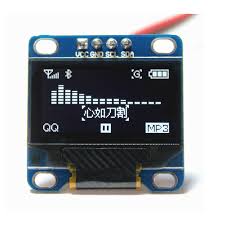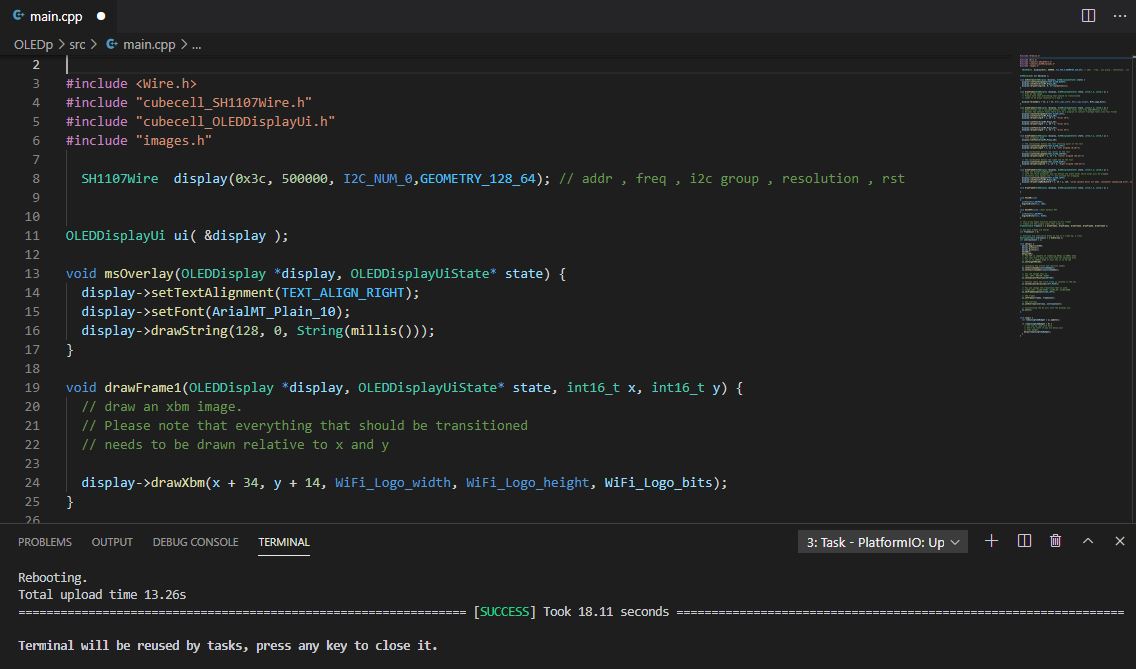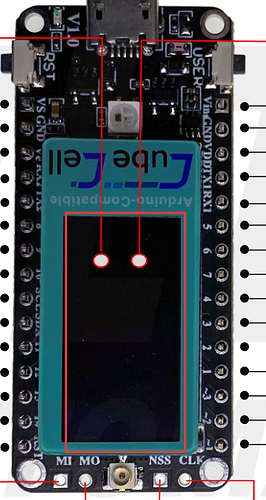Hola JasonXu, si estoy haciendo eso. lo he medido con un multímetro y le esta llegando alimentación de 3.3v.
el código que estoy usando es esta.
#include <Wire.h>
#include “cubecell_SH1107Wire.h”
#include “cubecell_OLEDDisplayUi.h”
#include “images.h”
SH1107Wire display(0x3c, 500000, I2C_NUM_0,GEOMETRY_128_64); // addr , freq , i2c group , resolution , rst
OLEDDisplayUi ui( &display );
void msOverlay(OLEDDisplay display, OLEDDisplayUiState state) {
display->setTextAlignment(TEXT_ALIGN_RIGHT);
display->setFont(ArialMT_Plain_10);
display->drawString(128, 0, String(millis()));
}
void drawFrame1(OLEDDisplay display, OLEDDisplayUiState state, int16_t x, int16_t y) {
// draw an xbm image.
// Please note that everything that should be transitioned
// needs to be drawn relative to x and y
display->drawXbm(x + 34, y + 14, WiFi_Logo_width, WiFi_Logo_height, WiFi_Logo_bits);
}
void drawFrame2(OLEDDisplay display, OLEDDisplayUiState state, int16_t x, int16_t y) {
// Demonstrates the 3 included default sizes. The fonts come from SSD1306Fonts.h file
// Besides the default fonts there will be a program to convert TrueType fonts into this format
display->setTextAlignment(TEXT_ALIGN_LEFT);
display->setFont(ArialMT_Plain_10);
display->drawString(0 + x, 10 + y, “Arial 10”);
display->setFont(ArialMT_Plain_16);
display->drawString(0 + x, 20 + y, “Arial 16”);
display->setFont(ArialMT_Plain_24);
display->drawString(0 + x, 34 + y, “Arial 24”);
}
void drawFrame3(OLEDDisplay display, OLEDDisplayUiState state, int16_t x, int16_t y) {
// Text alignment demo
display->setFont(ArialMT_Plain_10);
// The coordinates define the left starting point of the text
display->setTextAlignment(TEXT_ALIGN_LEFT);
display->drawString(0 + x, 11 + y, “Left aligned (0,10)”);
// The coordinates define the center of the text
display->setTextAlignment(TEXT_ALIGN_CENTER);
display->drawString(64 + x, 22 + y, “Center aligned (64,22)”);
// The coordinates define the right end of the text
display->setTextAlignment(TEXT_ALIGN_RIGHT);
display->drawString(128 + x, 33 + y, “Right aligned (128,33)”);
}
void drawFrame4(OLEDDisplay display, OLEDDisplayUiState state, int16_t x, int16_t y) {
// Demo for drawStringMaxWidth:
// with the third parameter you can define the width after which words will be wrapped.
// Currently only spaces and “-” are allowed for wrapping
display->setTextAlignment(TEXT_ALIGN_LEFT);
display->setFont(ArialMT_Plain_10);
display->drawStringMaxWidth(0 + x, 10 + y, 128, “Lorem ipsum\n dolor sit amet, consetetur sadipscing elitr, sed diam nonumy eirmod tempor invidunt ut labore.”);
}
void drawFrame5(OLEDDisplay display, OLEDDisplayUiState state, int16_t x, int16_t y) {
}
void VextON(void)
{
pinMode(Vext,OUTPUT);
digitalWrite(Vext, LOW);
}
void VextOFF(void) //Vext default OFF
{
pinMode(Vext,OUTPUT);
digitalWrite(Vext, HIGH);
}
// This array keeps function pointers to all frames
// frames are the single views that slide in
FrameCallback frames[] = { drawFrame1, drawFrame2, drawFrame3, drawFrame4, drawFrame5 };
// how many frames are there?
int frameCount = 5;
// Overlays are statically drawn on top of a frame eg. a clock
OverlayCallback overlays[] = { msOverlay };
int overlaysCount = 1;
void setup() {
Serial.begin(115200);
Serial.println();
Serial.println();
VextON();
delay(100);
// The ESP is capable of rendering 60fps in 80Mhz mode
// but that won’t give you much time for anything else
// run it in 160Mhz mode or just set it to 30 fps
ui.setTargetFPS(60);
// Customize the active and inactive symbol
ui.setActiveSymbol(activeSymbol);
ui.setInactiveSymbol(inactiveSymbol);
// You can change this to
// TOP, LEFT, BOTTOM, RIGHT
ui.setIndicatorPosition(BOTTOM);
// Defines where the first frame is located in the bar.
ui.setIndicatorDirection(LEFT_RIGHT);
// You can change the transition that is used
// SLIDE_LEFT, SLIDE_RIGHT, SLIDE_UP, SLIDE_DOWN
ui.setFrameAnimation(SLIDE_LEFT);
// Add frames
ui.setFrames(frames, frameCount);
// Add overlays
ui.setOverlays(overlays, overlaysCount);
// Initialising the UI will init the display too.
ui.init();
}
void loop() {
int remainingTimeBudget = ui.update();
if (remainingTimeBudget > 0) {
// You can do some work here
// Don’t do stuff if you are below your
// time budget.
delay(remainingTimeBudget);
}
}
alguna aclaración estare muy agradecido.




